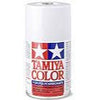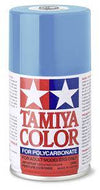Quick View
{"id":9101571457242,"title":"Welly 1\/24 Mercedes-Benz G-Class 2009 Black","handle":"welly-1-24-mercedes-benz-g-class-2009-black","description":"\u003ch5\u003eDescription\u003c\/h5\u003e\n\u003cp data-start=\"251\" data-end=\"668\"\u003eThe Welly 1:24 Mercedes-Benz G-Class (Black) is a detailed, ready-to-display die-cast replica of the iconic G-Wagon. With a sturdy metal body, realistic styling and working features, this model faithfully recreates the boxy presence and off-road SUV spirit of the real-world G-Class — ideal for collectors, car lovers, or anyone who appreciates classic SUV design in miniature. \u003cspan class=\"\" data-state=\"closed\"\u003e\u003cspan class=\"ms-1 inline-flex max-w-full items-center relative top-[-0.094rem] animate-[show_150ms_ease-in]\" data-testid=\"webpage-citation-pill\"\u003e\u003c\/span\u003e\u003c\/span\u003e\u003c\/p\u003e\n\u003chr data-start=\"670\" data-end=\"673\"\u003e\n\u003ch2 data-start=\"675\" data-end=\"695\"\u003e🔎 Key Features\u003c\/h2\u003e\n\u003cul data-start=\"697\" data-end=\"1923\"\u003e\n\u003cli data-start=\"697\" data-end=\"944\"\u003e\n\u003cp data-start=\"699\" data-end=\"944\"\u003e\u003cstrong data-start=\"699\" data-end=\"740\"\u003e1:24 Scale with Realistic Proportions\u003c\/strong\u003e — Scaled to approximately \u003cstrong data-start=\"767\" data-end=\"797\"\u003e7.5 inches (roughly 19 cm)\u003c\/strong\u003e in length, the model offers the perfect balance between display-worthy size and shelf-friendly dimensions. \u003cspan class=\"\" data-state=\"closed\"\u003e\u003cspan class=\"ms-1 inline-flex max-w-full items-center relative top-[-0.094rem] animate-[show_150ms_ease-in]\" data-testid=\"webpage-citation-pill\"\u003e\u003c\/span\u003e\u003c\/span\u003e\u003c\/p\u003e\n\u003c\/li\u003e\n\u003cli data-start=\"945\" data-end=\"1258\"\u003e\n\u003cp data-start=\"947\" data-end=\"1258\"\u003e\u003cstrong data-start=\"947\" data-end=\"996\"\u003eDie-Cast Metal Construction + Detailed Finish\u003c\/strong\u003e — The main body is metal for authenticity and weight, while smaller components (wheels, trim, windows, interior\/exterior detailing) are crafted from plastic or rubber — giving a convincing blend of realism and durability. \u003cspan class=\"\" data-state=\"closed\"\u003e\u003cspan class=\"ms-1 inline-flex max-w-full items-center relative top-[-0.094rem] animate-[show_150ms_ease-in]\" data-testid=\"webpage-citation-pill\"\u003e\u003c\/span\u003e\u003c\/span\u003e\u003c\/p\u003e\n\u003c\/li\u003e\n\u003cli data-start=\"1259\" data-end=\"1532\"\u003e\n\u003cp data-start=\"1261\" data-end=\"1532\"\u003e\u003cstrong data-start=\"1261\" data-end=\"1299\"\u003eInteractive \u0026amp; Collectible Features\u003c\/strong\u003e — This model comes with \u003cstrong data-start=\"1324\" data-end=\"1350\"\u003eopening doors and hood\u003c\/strong\u003e, \u003cstrong data-start=\"1352\" data-end=\"1380\"\u003esteerable\/rolling wheels\u003c\/strong\u003e, and a \u003cstrong data-start=\"1388\" data-end=\"1432\"\u003edetailed interior and engine compartment\u003c\/strong\u003e, adding interactive realism beyond a simple static display. \u003cspan class=\"\" data-state=\"closed\"\u003e\u003cspan class=\"ms-1 inline-flex max-w-full items-center relative top-[-0.094rem] animate-[show_150ms_ease-in]\" data-testid=\"webpage-citation-pill\"\u003e\u003c\/span\u003e\u003c\/span\u003e\u003c\/p\u003e\n\u003c\/li\u003e\n\u003cli data-start=\"1533\" data-end=\"1756\"\u003e\n\u003cp data-start=\"1535\" data-end=\"1756\"\u003e\u003cstrong data-start=\"1535\" data-end=\"1567\"\u003eAuthentic G-Class SUV Design\u003c\/strong\u003e — The characteristic boxy shape, upright stance, rugged lines and SUV silhouette are faithfully replicated, making the model instantly recognizable. \u003cspan class=\"\" data-state=\"closed\"\u003e\u003cspan class=\"ms-1 inline-flex max-w-full items-center relative top-[-0.094rem] animate-[show_150ms_ease-in]\" data-testid=\"webpage-citation-pill\"\u003e\u003c\/span\u003e\u003c\/span\u003e\u003c\/p\u003e\n\u003c\/li\u003e\n\u003cli data-start=\"1757\" data-end=\"1923\"\u003e\n\u003cp data-start=\"1759\" data-end=\"1923\"\u003e\u003cstrong data-start=\"1759\" data-end=\"1788\"\u003eCollector-Ready Packaging\u003c\/strong\u003e — Supplied new and boxed — ready for display straight from the box, with no assembly required.\u003c\/p\u003e\n\u003c\/li\u003e\n\u003c\/ul\u003e","published_at":"2025-11-27T14:44:27+02:00","created_at":"2025-11-27T14:44:27+02:00","vendor":"Welly","type":"Diecast","tags":["diecast","Welly"],"price":39900,"price_min":39900,"price_max":39900,"available":true,"price_varies":false,"compare_at_price":null,"compare_at_price_min":0,"compare_at_price_max":0,"compare_at_price_varies":false,"variants":[{"id":47163479851226,"title":"Default Title","option1":"Default Title","option2":null,"option3":null,"sku":"WEL24012BK","requires_shipping":true,"taxable":true,"featured_image":null,"available":true,"name":"Welly 1\/24 Mercedes-Benz G-Class 2009 Black","public_title":null,"options":["Default Title"],"price":39900,"weight":0,"compare_at_price":null,"inventory_quantity":2,"inventory_management":"shopify","inventory_policy":"deny","barcode":null,"requires_selling_plan":false,"selling_plan_allocations":[]}],"images":["\/\/gpmodels.co.za\/cdn\/shop\/files\/download_4915abe5-c5b1-4503-8077-80248dface1f.jpg?v=1764247694","\/\/gpmodels.co.za\/cdn\/shop\/files\/images_0726426d-f0b9-4de6-8611-9b3f80d33f08.jpg?v=1764247863"],"featured_image":"\/\/gpmodels.co.za\/cdn\/shop\/files\/download_4915abe5-c5b1-4503-8077-80248dface1f.jpg?v=1764247694","options":["Title"],"media":[{"alt":null,"id":40931634544858,"position":1,"preview_image":{"aspect_ratio":1.516,"height":182,"width":276,"src":"\/\/gpmodels.co.za\/cdn\/shop\/files\/download_4915abe5-c5b1-4503-8077-80248dface1f.jpg?v=1764247694"},"aspect_ratio":1.516,"height":182,"media_type":"image","src":"\/\/gpmodels.co.za\/cdn\/shop\/files\/download_4915abe5-c5b1-4503-8077-80248dface1f.jpg?v=1764247694","width":276},{"alt":null,"id":40931653058778,"position":2,"preview_image":{"aspect_ratio":2.247,"height":150,"width":337,"src":"\/\/gpmodels.co.za\/cdn\/shop\/files\/images_0726426d-f0b9-4de6-8611-9b3f80d33f08.jpg?v=1764247863"},"aspect_ratio":2.247,"height":150,"media_type":"image","src":"\/\/gpmodels.co.za\/cdn\/shop\/files\/images_0726426d-f0b9-4de6-8611-9b3f80d33f08.jpg?v=1764247863","width":337}],"requires_selling_plan":false,"selling_plan_groups":[],"content":"\u003ch5\u003eDescription\u003c\/h5\u003e\n\u003cp data-start=\"251\" data-end=\"668\"\u003eThe Welly 1:24 Mercedes-Benz G-Class (Black) is a detailed, ready-to-display die-cast replica of the iconic G-Wagon. With a sturdy metal body, realistic styling and working features, this model faithfully recreates the boxy presence and off-road SUV spirit of the real-world G-Class — ideal for collectors, car lovers, or anyone who appreciates classic SUV design in miniature. \u003cspan class=\"\" data-state=\"closed\"\u003e\u003cspan class=\"ms-1 inline-flex max-w-full items-center relative top-[-0.094rem] animate-[show_150ms_ease-in]\" data-testid=\"webpage-citation-pill\"\u003e\u003c\/span\u003e\u003c\/span\u003e\u003c\/p\u003e\n\u003chr data-start=\"670\" data-end=\"673\"\u003e\n\u003ch2 data-start=\"675\" data-end=\"695\"\u003e🔎 Key Features\u003c\/h2\u003e\n\u003cul data-start=\"697\" data-end=\"1923\"\u003e\n\u003cli data-start=\"697\" data-end=\"944\"\u003e\n\u003cp data-start=\"699\" data-end=\"944\"\u003e\u003cstrong data-start=\"699\" data-end=\"740\"\u003e1:24 Scale with Realistic Proportions\u003c\/strong\u003e — Scaled to approximately \u003cstrong data-start=\"767\" data-end=\"797\"\u003e7.5 inches (roughly 19 cm)\u003c\/strong\u003e in length, the model offers the perfect balance between display-worthy size and shelf-friendly dimensions. \u003cspan class=\"\" data-state=\"closed\"\u003e\u003cspan class=\"ms-1 inline-flex max-w-full items-center relative top-[-0.094rem] animate-[show_150ms_ease-in]\" data-testid=\"webpage-citation-pill\"\u003e\u003c\/span\u003e\u003c\/span\u003e\u003c\/p\u003e\n\u003c\/li\u003e\n\u003cli data-start=\"945\" data-end=\"1258\"\u003e\n\u003cp data-start=\"947\" data-end=\"1258\"\u003e\u003cstrong data-start=\"947\" data-end=\"996\"\u003eDie-Cast Metal Construction + Detailed Finish\u003c\/strong\u003e — The main body is metal for authenticity and weight, while smaller components (wheels, trim, windows, interior\/exterior detailing) are crafted from plastic or rubber — giving a convincing blend of realism and durability. \u003cspan class=\"\" data-state=\"closed\"\u003e\u003cspan class=\"ms-1 inline-flex max-w-full items-center relative top-[-0.094rem] animate-[show_150ms_ease-in]\" data-testid=\"webpage-citation-pill\"\u003e\u003c\/span\u003e\u003c\/span\u003e\u003c\/p\u003e\n\u003c\/li\u003e\n\u003cli data-start=\"1259\" data-end=\"1532\"\u003e\n\u003cp data-start=\"1261\" data-end=\"1532\"\u003e\u003cstrong data-start=\"1261\" data-end=\"1299\"\u003eInteractive \u0026amp; Collectible Features\u003c\/strong\u003e — This model comes with \u003cstrong data-start=\"1324\" data-end=\"1350\"\u003eopening doors and hood\u003c\/strong\u003e, \u003cstrong data-start=\"1352\" data-end=\"1380\"\u003esteerable\/rolling wheels\u003c\/strong\u003e, and a \u003cstrong data-start=\"1388\" data-end=\"1432\"\u003edetailed interior and engine compartment\u003c\/strong\u003e, adding interactive realism beyond a simple static display. \u003cspan class=\"\" data-state=\"closed\"\u003e\u003cspan class=\"ms-1 inline-flex max-w-full items-center relative top-[-0.094rem] animate-[show_150ms_ease-in]\" data-testid=\"webpage-citation-pill\"\u003e\u003c\/span\u003e\u003c\/span\u003e\u003c\/p\u003e\n\u003c\/li\u003e\n\u003cli data-start=\"1533\" data-end=\"1756\"\u003e\n\u003cp data-start=\"1535\" data-end=\"1756\"\u003e\u003cstrong data-start=\"1535\" data-end=\"1567\"\u003eAuthentic G-Class SUV Design\u003c\/strong\u003e — The characteristic boxy shape, upright stance, rugged lines and SUV silhouette are faithfully replicated, making the model instantly recognizable. \u003cspan class=\"\" data-state=\"closed\"\u003e\u003cspan class=\"ms-1 inline-flex max-w-full items-center relative top-[-0.094rem] animate-[show_150ms_ease-in]\" data-testid=\"webpage-citation-pill\"\u003e\u003c\/span\u003e\u003c\/span\u003e\u003c\/p\u003e\n\u003c\/li\u003e\n\u003cli data-start=\"1757\" data-end=\"1923\"\u003e\n\u003cp data-start=\"1759\" data-end=\"1923\"\u003e\u003cstrong data-start=\"1759\" data-end=\"1788\"\u003eCollector-Ready Packaging\u003c\/strong\u003e — Supplied new and boxed — ready for display straight from the box, with no assembly required.\u003c\/p\u003e\n\u003c\/li\u003e\n\u003c\/ul\u003e"}




















